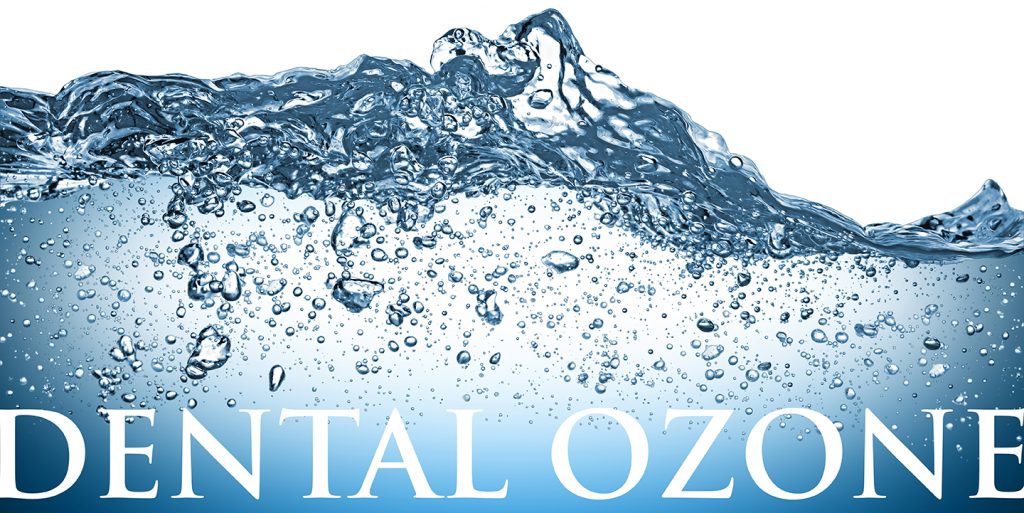ACIMD – American College of Integrative Medicine and Dentistry
Dental Ozone – FrequentQuestions and Basic
FREQUENTLY ASKED QUESTIONS:
1. How does ozone produce therapeutic effect in the Dental Office?
Ozone is a powerful oxidant. Bacteria, Viruses, Fungi and parasites have little or no antioxidant enzymes in their cell membranes. Without this protection ozone oxidizes (burns a hole through) the cell membrane causing it to rupture, resulting in cell death. Healthy cells have antioxidant enzymes in their cell membranes and are not harmed by therapeutic levels of ozone. Water treatment research in Europe has demonstrated that one molecule of ozone has the oxidizing power of more that 3000 molecules of chlorine. This same research also showed that the ozone killed pathogenic organisms 3500 times faster with no toxic side effects and no toxic byproducts. Medical ozone studies have demonstrated benefits such as: improved wound healing, improving the immune system response, increased oxygen delivery to hypoxic tissues, etc. Velio Bocci, MD, in his book, “Ozone, A New Medical Drug” states,”… …it is clear that, among complementary approaches, ozone therapy has emerged as the one that is well explainable with classical biochemical, physiological, and pharmacological knowledge.”

2. Are Dentists using ozone in their practices now?
Yes, as reported in the April 2010 edition of “Dental Product Shopper”, ozone has revolutionized the dental practices of hundreds of Dentists. When ozone is used in Dental procedures it treats the cause of the problem NOT JUST the symptom. This produces a proactive approach to treatment rather than solely engaging in the routine procedure of damage control. (See http:Unmw.dentalproductshopper.com/dou120-dentaI-ozone-svstem )
3. How are other Dentists using ozone for dental treatment?
Prevention and Protection: Routine use of ozonated water as a pretreatment patient rinse to disinfect their oral cavity. Fill the unit water supply bottles and the Ultrasonic/Piezo reservoirs with ozonated water. This protects you and your staff from aerosol contaminants produced by high speed instruments and water spray from the three way syringe. The unit water lines will also be free of all biofilms when the ozonated water is used in the reservoirs. Ozone performs this disinfection and sterilization and leaves only oxygen and water as byproducts.
Patient Treatment: In patient care, ozone is utilized in three forms:
(1) Ozonated water and
(2) Pure oxygen/ozone gas
(3) Ozonated Olive Oil
Using these three agents in combination allows the Dentist to treat all oral infections using only oxygen and water! Regardless of the location or the type of infection ozone is able to treat almost any situation. The ozonated water is the perfect irrigation solution for periodontics and endodontics. For operative dentistry, periodontics and endodontics, ozone gas is used to reach and penetrate areas such as: carious dentin, dentinal tubules, accessory canals and periodontal pockets where no other antibiotic or disinfectant can reach. Ozonated Olive oil aids in healing after laser treatments.
This is possible because the infection/inflammation is positively charged (acidic) and ozone is negatively charged. (basic) Therefore, the chemistry of the infection and/or inflammation attracts the ozone to the area.
ACIMD – American College of Integrative Medicine and Dentistry
4. Is ozone toxic?
Ozone is a strong oxidant, and when used properly is not toxic to normal healthy human cells. Because of this extreme oxidant capacity, good ozone hygiene is required. Correctly scavenging the excess ozone gas and preventing it from escaping into the office environment is important. This is easily accomplished for example, by ensuring that an “Ozone Destruct Unit” is attached to the flask of water (when ozonating water) to collect and destroy all ozone gas that has not been absorbed by the water.
5. Are there any published studies on Dental ozone?
Yes, there are hundreds of published research studies that use ozone in dental procedures. In the book, “OZONE, The Revolution in Dentistry”, edited by Dr. Edward Lynch and published by Quintessence Publishing Company Limited, there are 132 studies applying ozone treatment to different dental problems (page 78, Table 1). There are hundreds of published articles on the medical uses of ozone. A research article from Scripps Institute, in LaJolla, CA, published in November, 2002, in the journal, “Science”, reported that ozone was produced in the plasma cells to kill invading pathogens. This ozone production is a naturally occurring process in our immune systems. Dentists can also take advantage of many “Medical” methods of using ozone, to eliminate infection and promote healing in soft tissues and bone. For example, the use of ozone for periodontal disease is simply a modified version of treating open wounds elsewhere on the body with ozone, a practice that has been performed for over 60 years by physicians around the world. Highly respected books regarding the use of ozone in Medicine are available, such as “The Use of Ozone in Medicine”, by Renate Viebahn, and “Ozone Therapy”, by Dr. Frank Shallenberger MD. These books are important for dentists, as they explain the biochemical and physiological actions of ozone, relevant to the Dentists use of ozone in the oral cavity.
6. When was ozone first used in dental procedures?
In the 1930’s, ozone was used in Germany for dental procedures by Dr. E.A. Fisch.
A BRIEF DESCRIPTION OF SPECIFIC DENTAL APPLICATIONS
l. Hygiene Appointments—-Protect Patients and Staff
a. Patient uses ozonated water as a pretreatment rinse
b. Ozonated water is used in the unit water supply bottles
c. Ozonated water is used in the Ultrasonic unit water reservoirs
d. Ozone gas is used before placing sealants
2. Operative Dentistry Appointments—-Protect Patient, Doctor and Staff
a. Patient uses ozonated water as a pretreatment rinse
b. Ozonated water is used in the unit water supply bottles
c. Ozone GAS is applied to cavity preparations and crown preparations to sterilize the prepared tooth by oxidizing the remaining pathogens and organic materials in the enamel, remaining caries, and dentinal tubules. This produces a pathogen free oxidized surface that enhances bonding strength and decreases or eliminates post-operative sensitivity.
3. Periodontal Appointments—-Protect Patient, Doctor and Staff
a. Patient uses ozonated water as a pretreatment rinse
b. Ozonated water is used in the unit water supply bottles
c. Ozonated water is used in the Ultrasonic water reservoir
d. Ozonated water is used to irrigate periodontal pockets
e. Ozone GAS is used to insufflate ( blow gas into) the periodontal pockets. Ozone Custom Trays are used for total saturation (microbaric therapy) of all periodontal tissues AND carious lesions, precarious areas, occlusal grooves, interproximal areas and margins of existing restorations. This can prevent caries and aid in decalcification of areas that have minimally invasive caries
4. Endodontic Appointments—Protect Patient, Doctor and Staff
a. Patient uses ozonated water as a pretreatment rinse
b. Ozonated water is used in the unit water supply bottles
c. Irrigate canals with ozonated water to debride the canals and remove biofilm
d. Insufflate canals with ozone GAS to eliminate pathogens and oxidize organic materials in the dentinal tubules, accessory canals and lateral canals
This information has been prepared and written by the ACIMD — American College for Integrative Medicine and Dentistry.
BASIC SCIENTIFIC FACTS
• Ozone (03) is an allotrope of Oxygen (02). An allotrope is a variant of a substance consisting of only one type of atom. It has a NEW molecular configuration and NEW PHYSICAL PROPERTIES. Example: carbon can exist in multiple forms such as: a #0ft graphite and/or a hard diamond.
• Ozone is created by an energetic reaction that results in an oxygen molecule (02) being split into singlet oxygen (01). A singlet oxygen then combines with a diatomic oxygen (02) forming ozone (03). This energetic process is a result of energy produced by: sunlight, lightning, ultraviolet light and corona discharge tubes.
• Ozone is an oxidant and is also referred to as an oxidizer. An oxidizer is a substance that accepts an electron from another substance and is then reduced. It acts as an electron acceptor. It also adds an oxygen atom to the compound being oxidized. In vivo it produces hydroperoxides, lipoperoxides, etc.
• Healthy cells have antioxidant enzymes in their cell membranes, such as: superoxide dismutase, catalase, glutathione peroxidase, etc. There are also antioxidants such as: vitamin C, vitamin E, etc. present in the extracellular matrix fluids, plasma, etc. These antioxidants protect the healthy cells from being oxidized (burned up) by ozone.
• Pathogens such as: Bacteria, Viruses, Fungi, and Parasites have little or no antioxidant enzymes in their cell membranes. This makes them vulnerable to oxidants. An oxidant (ozone, chlorine, etc.) will destroy the cell membrane of the pathogen resulting in a disinfecting or sterilizing effect. Ozone leaves NO TOXIC BYPRODUCTS like chlorine compounds (trihalomethanes, etc.) leave in vivo or ex vivo. The final breakdown products of 03 are water and oxygen.
• Biofilms are a complex aggregation of structurally and genetically diverse microorganisms growing on a solid surface. Biofilms are found in dental plaque, carious lesions, periodontitis, dental waterlines, etc. The cover story in “THE JOURNAL OF THE AMERICAN DENTAL ASSOCIATION,” Vol 140, No 8 978-986 is “Periodontitis: An Amhetypical Biofilm Disease” It states that “Periodontitis is a classic example of biofilm-mediated diseases.” The article concluded that, “Periodontitis, like other biofilm infections, is refractory to antibiotic agents and host defenses because the causative microbes live in complex communities that persist despite challenges that range from targeted antibiotic agents to phagocytosis.” The clinical implications concluded that “The regular delivery of nontargeted antibiofilm agents may be an effective strategy for treating biofilms, especially if these agents include oxidative agents *Opinion: This means that ozone could be used in that dissolve the biofilm matrix.” all denEl procedures, as it has been proven to eliminate bjofilms.










